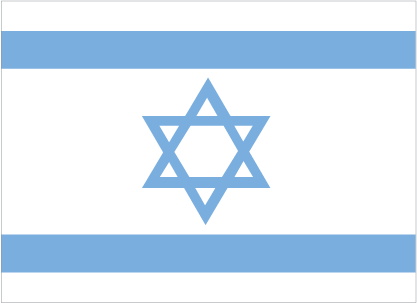To help inspire or plan your trip to Israel, some of its major attractions
for travellers are shown below, including some of the best natural, historical, cultural and adventure sites in the country.
These include all of UNESCO World Heritage Sites for Israel which represent the best
of the world's cultural and natural heritage.
Click on the icons below to focus on specific types of features
(click again to return to all).
|
|
|
|
|
|
|
|
|
|
|
|
 |
|---|---|---|---|---|---|---|---|---|---|---|---|
| Natural | History | Wildlife | Trekking | Cities | Religious Monument | Boat Journey | Rail Journey | Diving | Cultural | Adrenaline | UNESCO WHS |
Religious Monuments in Israel
| Jerusalem | |
|---|---|
Jerusalem is a holy city for the three great monotheistic religions of the world - Christianity, Judaism and Islam. It holds importance as a place of pilgrimage and symbolism and has been the site of conflict for centuries. Among its 220 historic monuments are some of the holiest Jewish, Christian and Muslim sites in the world. The Temple Mount was the site of the First Temple, built by King Solomon, and the Second Temple, destroyed by the Romans in AD 70. Today, only the Western Wall remains, which was part of the supporting structure for the temple and is now perhaps the most revered of all Jewish sites. The atmosphere at the plaza around the Wall is amazing at sunset on Shabbat or for bar mitzvahs as is filled with people celebrating with music, singing and dancing. The most sacred Christian site is the Church of the Holy Sepulchre, marking the site of the crucifixion, tomb and resurrection of Jesus, still tensely shared between the different Christian churches. Via Dolorosa is believed to be the route taken by Jesus on the way to his crucifixion (though most historians believe it to be inaccurate). When the Arabs captured Jerusalem in the 7th century, they built the Dome of the Rock and the Al-Asqa Mosque on the Temple Mount (Al-Haram ash-Sharif). The Dome is the third most sacred site in Islam, believed to be the site of Mohammed's ascension to heaven. Other sites of note in Jerusalem include the Mount of Olives, offering superb panoramic views over the city and hosting numerous churches and the historic Citadel (or Tower of David). The old city itself it wonderful for wandering its narrow streets and alleyways and noting the contrast between the different quarters - The Christian quarter filled with tour groups and souvenir shops, the Muslim quarter with its hectic hustle and bustle of everyday life and the more modern and quiet residential areas of the Jewish quarter. Outside of the old city lie two excellent museums - the Israel Museum charting the history of the country and including the Dead Sea Scrolls and Yad Vashem, Israel's memorial to the Holocaust. UNESCO World Heritage Site: Old City of Jerusalem and its Walls | |
| Biblical Sites of Galilee | |
|---|---|
There are numerous sites around the Sea of Galilee in northern Israel made famous by the Bible and the life of Jesus, most of which are marked by churches. Nazareth was the site of the Annunciation and Jesus's childhood home. Today Israel's largest Arab city and home to a burgeoning culinary scene, it's main attraction is the modernist Basilica of the Annunciation. On the shores of Galilee itself lies Tabgha - site of the Sermon on the Mount and the feeding of the 5,000 where you can visit the Mount and the Churches of the Multiplication of the Loaves and the Primacy of St Peter and Capernaum, the birthplace of St. Peter and believed to be the site where Jesus started his ministry. Other sites of interest may include Mount Tabor, site of the transfiguration of Jesus, and Kafr Kana (Cana) where Jesus performed his first miracle turning water into wine. | |
| Bahá’i Holy Places in Haifa and the Western Galilee | |
|---|---|
The Bahá’i faith was founded by Bahá’u’lláh in Persia in the 19th century and emphasises the spiritual unity of all peoples. Its two most holy places are the Shrine of Bahá’u’lláh in Acre and the Shrine of the Báb in Haifa, together with their surrounding gardens, associated buildings and monuments, which are places of pilgrimage for the 7 million Bahá’is around the world. The gardens are a spectacular site with 19 terraces above and below the shrine expertly landscaped on the slopes of Mount Carmel and tended to by 100 gardeners. There is one free tour of the gardens per day (except Wednesdays) departing at noon where you can learn more about the shrine and the Bahá’i faith. UNESCO World Heritage Site: Bahá’i Holy Places in Haifa and the Western Galilee | |




